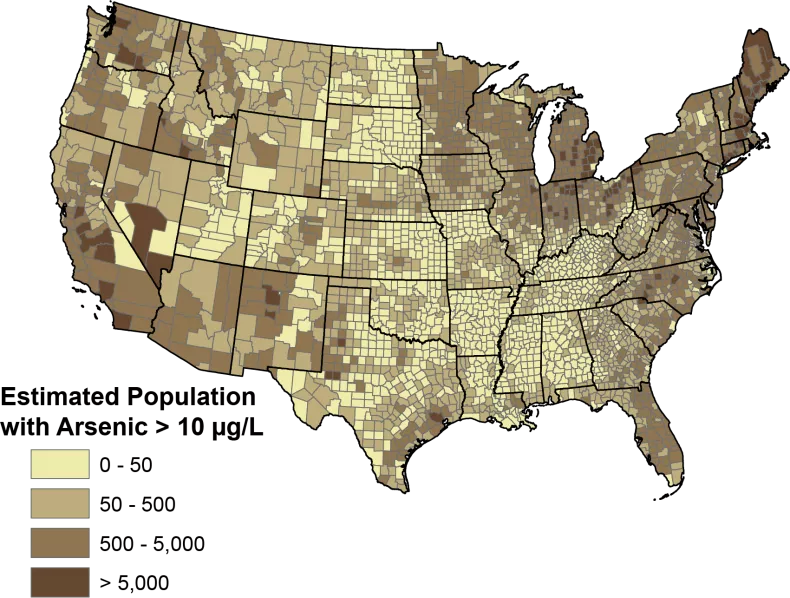New research suggests that long-term exposure to arsenic in drinking water can significantly increase the risk of cardiovascular disease, even when levels are below the current federal limits.
This study is groundbreaking as it establishes exposure-response relationships even at concentrations lower than the current regulatory threshold of 10 micrograms per liter (µg/L).
It is concerning to discover that there are already 2.1 million Americans who are exposed to arsenic levels higher than 10 µg/L. Additionally, the United States Geological Survey (USGS) has found that almost half of the drinking water wells tested in the U.S. have concentrations of arsenic over 1 µg/L.
“We have discovered a significant correlation between long-term exposure to arsenic in residential community water supplies and an increased risk of cardiovascular disease, specifically ischemic heart disease, in women residing in California,” stated Danielle Medgyesi, the lead author of the study, in an interview with Newsweek.
“Our findings are groundbreaking and will surely spark a fresh debate on existing policy and regulatory standards,” remarked Tiffany Sanchez, a senior author at Columbia Mailman School.
According to Medgyesi, the findings offer more proof to advocate for a lower limit in order to safeguard health. She suggests that the limit should be reduced to a minimum of 5ug/L.
The EPA lowered the maximum contaminant level from 50 µg/L to 10 µg/L in 2006. However, recent findings indicate that even this lower limit may not effectively safeguard public health.
Newsweek sent an email to the EPA and contacted the USGS through its website to request comment.
Are You at Risk?
Arsenic contamination is a widespread issue across the United States, although the recent study specifically examined the quality of drinking water in California.
According to the US Geological Survey (USGS), there are certain regions in the United States where drinking water wells exceed the legal levels. The Southwest is especially worrisome, with 16 percent of these wells surpassing the acceptable limits. Additionally, the USGS has identified other aquifers, such as those in the northern U.S. and the Mississippi Embayment-Texas Coastal Uplands Aquifer System in the Southeast, as areas of concern.

According to a study published in Environmental Health Perspectives, long-term exposure to arsenic in community water supplies may increase the risk of cardiovascular disease among women. The study, conducted by Medgyesi et al. (2024), focused on women in the California Teachers Study and examined the association between arsenic exposure and cardiovascular disease.
The researchers found that women who were exposed to higher levels of arsenic in their community water supplies had an increased risk of developing cardiovascular disease compared to those with lower exposure levels. This association remained significant even after adjusting for various potential confounding factors.
“These findings provide further evidence of the potential health risks associated with arsenic exposure in drinking water,” said Dr. John Fisher, one of the authors of the study. “It is important for policymakers to consider implementing measures to reduce arsenic levels in community water supplies in order to protect public health.”
While the study focused specifically on women in California, the findings may have broader implications for populations exposed to arsenic through their drinking water. Arsenic is a naturally occurring element that can contaminate water supplies and is known to have various adverse health effects.
The study highlights the importance of ensuring safe drinking water for everyone and underscores the need for ongoing monitoring and regulation of water quality. Further research is needed to better understand the mechanisms by which arsenic exposure may contribute to cardiovascular disease and to identify strategies for mitigating this risk.

